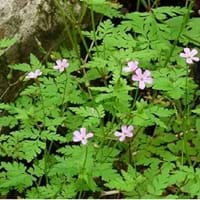Life Span
Perennial
Annual or Biennial
Type
Broadleaf Evergreen
Herbs
Origin
Australia
Asia, Europe, North Africa, North America
Types
Bigleaf hydrangea, Hortensia, Smooth hydrangea, Oakleaf hydrangea, Annabelle
Not Available
Number of Varieties
Not Available
Habitat
Forest edges, Hillside, Woods
Shaded sites, Waste areas
USDA Hardiness Zone
9-15
3-9
AHS Heat Zone
Not Available
9 - 1
Habit
Spreading
Clump-Forming
Flower Color
Red
Pink, Magenta, Rose
Flower Color Modifier
Bicolor
Bicolor
Fruit Color
Sandy Brown
Not Available
Leaf Color in Spring
Green, Sea Green, Rose, Bronze
Green, Light Green
Leaf Color in Summer
Green, Light Green
Green
Leaf Color in Fall
Green, Light Green, Gray Green
Red, Green, Dark Red
Leaf Color in Winter
Green, Gray Green
Light Green
Leaf Shape
Oblovate
Arrowhead
Plant Season
Spring, Summer, Fall, Winter
Spring, Summer, Fall, Winter
Sunlight
Full Sun, Partial Sun
Partial Sun, Partial shade, Full Shade
Growth Rate
Medium
Very Fast
Type of Soil
Loam, Sand
Loam, Sand
The pH of Soil
Acidic, Neutral
Acidic, Neutral, Alkaline
Soil Drainage
Well drained
Average
Bloom Time
Indeterminate
Spring, Late Spring, Early Summer, Summer
Tolerances
Wet Site, Pollution, Drought, Salt, Soil Compaction
Not Available
Where to Plant?
Container, Ground
Ground
How to Plant?
Seedlings, Stem Planting
Not Available
Plant Maintenance
Medium
Medium
Watering Requirements
Not Available
Keep ground moist, Requires regular watering
In Summer
Drought Tolerant
Average Water
In Spring
Moderate
Average Water
In Winter
Average Water
Average Water
Soil pH
Acidic, Neutral
Acidic, Neutral, Alkaline
Soil Type
Loam, Sand
Loam, Sand
Soil Drainage Capacity
Well drained
Average
Sun Exposure
Full Sun, Partial Sun
Partial Sun, Partial shade, Full Shade
Pruning
Remove damaged leaves, Remove dead branches, Remove dead leaves
Cut or pinch the stems, Remove damaged leaves, Remove dead leaves
Fertilizers
All-Purpose Liquid Fertilizer
Not Available
Pests and Diseases
Red blotch
Downy mildew, Pest Free, Powdery mildew
Plant Tolerance
Wet Site, Pollution, Drought, Salt, Soil Compaction
Shade areas
Flower Petal Number
Single
Single
Fragrant Bark/Stem
No
Yes
Foliage Texture
Fine
Fine
Foliage Sheen
Matte
Matte
Attracts
Bees, Flies
Not Available
Allergy
Chest tightness, Diarrhea, Dizziness, Nausea, Vomiting
Not Available
Aesthetic Uses
Not Available
Cottage Garden, Showy Purposes
Beauty Benefits
Not Available
Good for skin, Reduce Bruises, Skin irritation
Edible Uses
Not Available
Yes
Environmental Uses
Air purification
Insect Repellent
Medicinal Uses
Fever, Kidney problems, Urinary tract problems
Antioxidants, Antiseptic, Astringent, Diabetes, Diarrhea, Diuretic, Gallbladder Diseases, Haemorrhages, Inflammation, Kidney problems, Kidney Stones, Liver problems, Sore throat, Strengthen gums, Swelling, Ulcers
Part of Plant Used
Flowers, Root
Leaves, Root, Whole plant
Other Uses
Not Available
Can be made into a herbal tea, repels rabbits, deers and mosquitos, Used as a nutritious food item
Used As Indoor Plant
Not Available
No
Used As Outdoor Plant
Yes
Yes
Garden Design
Container, Feature Plant, Hedges, Mixed Border, Screening, Wind Break, Topiary, Bonsai, Espalier, Tropical
Bedding Plant, Mixed Border, Wildflower
Botanical Name
CALLISTEMON citrinus
GERANIUM robertianum
Common Name
Crimson Bottlebrush
Death-Comes-Quickly, Herb Robert, Dove's Foot, Crow's Foot, Storksbill, Red Robin
In Hindi
Hydrangea
जड़ी बूटी रॉबर्ट
In German
Hortensie
Kraut Robert
In French
Hortensia
herbe à Robert
In Spanish
Hortensia
hierba de San Roberto
In Greek
υδραγεία
βότανο Robert
In Portuguese
Hortênsia
erva robert
In Polish
Hortensja
herb robert
In Latin
Hibiscus
Robertus herba
Phylum
Not Available
Magnoliophyta
Class
Not Available
Magnoliopsida
Order
Not Available
Geraniales
Family
Myrtaceae
Geraniaceae
Genus
Not Available
Geranium
Clade
Not Available
Angiosperms, Eudicots, Rosids
Tribe
Not Available
Not Available
Subfamily
Not Available
Not Available
Number of Species
Not Available
Not Available
Importance of Crimson Bottlebrush and Herb Robert
Want to have the most appropriate plant for your garden? You might want to know the importance of Crimson Bottlebrush and Herb Robert. Basically, these two plants vary in many aspects. Compare Crimson Bottlebrush and Herb Robert as they differ in many characteristics such as their life, care, benefits, facts, etc. Every gardener must at least have the slightest clue about the plants he wants to plant in his garden. Compare their benefits, which differ in many ways like facts and uses. The medicinal use of Crimson Bottlebrush is Fever, Kidney problems and Urinary tract problems whereas of Herb Robert is Antioxidants, Antiseptic, Astringent, Diabetes, Diarrhea, Diuretic, Gallbladder Diseases, Haemorrhages, Inflammation, Kidney problems, Kidney Stones, Liver problems, Sore throat, Strengthen gums, Swelling and Ulcers. Crimson Bottlebrush has beauty benefits as follows: Not Available while Herb Robert has beauty benefits as follows: Not Available.
Compare Facts of Crimson Bottlebrush vs Herb Robert
How to choose the best garden plant for your garden depending upon its facts? Here garden plant comparison will help you to solve this query. Compare the facts of Crimson Bottlebrush vs Herb Robert and know which one to choose. As garden plants have benefits and other uses, allergy is also a major drawback of plants for some people. Allergic reactions of Crimson Bottlebrush are Chest tightness, Diarrhea, Dizziness, Nausea and Vomiting whereas of Herb Robert have Not Available respectively. Having a fruit bearing plant in your garden can be a plus point of your garden. Crimson Bottlebrush has no showy fruits and Herb Robert has no showy fruits. Also Crimson Bottlebrush is not flowering and Herb Robert is not flowering . You can compare Crimson Bottlebrush and Herb Robert facts and facts of other plants too.

